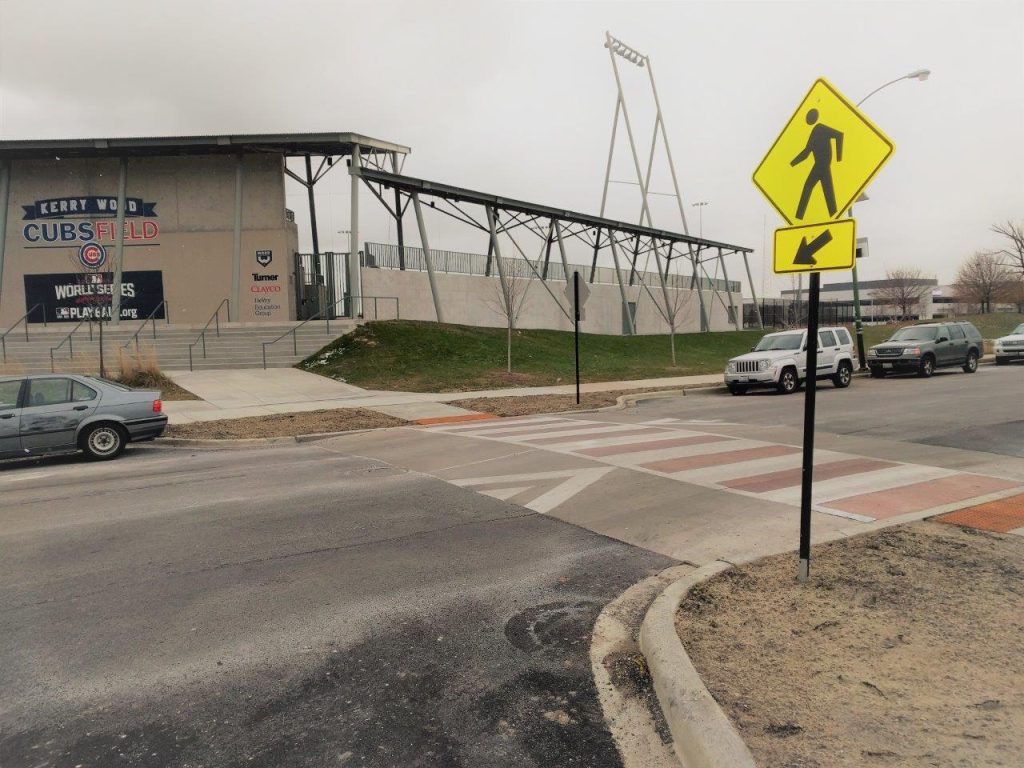It’s been proven in Chicago and cities across the country that the fastest way to make streets safer is to redesign them and prioritize the movement of people – not cars.
When the city established a Complete Streets policy in 2006, it committed to accommodating the safety and convenience of all road users in transportation and development projects. Then in 2013 the city’s Complete Streets Guidelines established a modal hierarchy that placed people walking at the top, follow by people riding transit, biking and driving cars.
In recent years, we’ve seen the Chicago Department of Transportation (CDOT) follow through on these commitments with many exciting projects that include rightsizing vehicle travel lanes, adding protected bike lanes, and enhancing crossings with refuge islands and signal adjustments.
Yet we still have a long way to go. Too many Chicago streets are supersized and thereby encourage drivers to speed. As the city develops its Vision Zero Action Plan, we need to think about how we can take these street safety improvements to scale and see an impact in traffic fatality and serious injury numbers.
Every city that’s working on Vision Zero has prioritized changing infrastructure so there’s plenty of strategies Chicago should consider:
- More rightsizing: Although progress has been made in recent years, too many Chicago streets remain designed to move as many cars as possible as quickly as possible. Rightsizing projects that repurpose vehicle travel lanes for biking, waking or transit have proven to make streets safer for all users.Chicago should implement more rightsizing projects on high-crash corridors with excess capacity.
- Better biking and walking infrastructure: Chicago’s growing network of protected bike lanes, enhanced crossings and off-street trails has led more people biking and walking while making our streets safer for all users. While continuing to expand the network, Chicago should upgrade its highest traffic corridors with more permanent and safe infrastructure like curb separation and protected intersections to reduce turning conflicts.
- Dedicated funding: Currently, street safety projects are funded through a patchwork of sources, none of which are consistently available nor adequate to address the overwhelming need. The only dedicated fund for pedestrian infrastructure improvements, for example, is the city’s popular Shared Cost Sidewalk Program, which always runs out of money within days of accepting applications. To implement the Action Plan and achieve real progress on Vision Zero, Chicago must establish and grow a dedicated Vision Zero Fund in the city budget. Vision Zero cities such as New York, Washington, D.C., Seattle, Denver and Boston have already established similar funds.
We can’t afford to just maintain the current pace of street improvements if we truly want to prevent traffic crashes and save lives. Support greater investment in safe streets by signing our Vision Zero Call to Action today.
Learn more about Vision Zero – including our policy recommendations on commercial vehicles, hit and run crashes, speed reduction, turn restrictions and education – on our Vision Zero campaign page.

